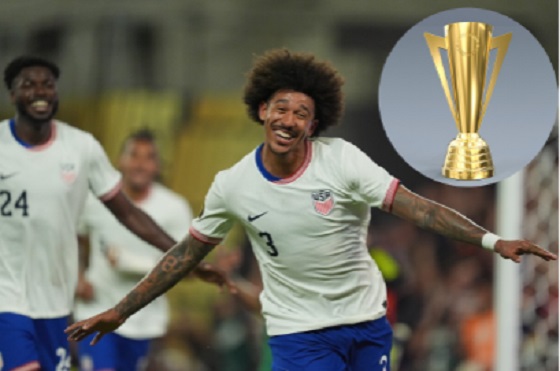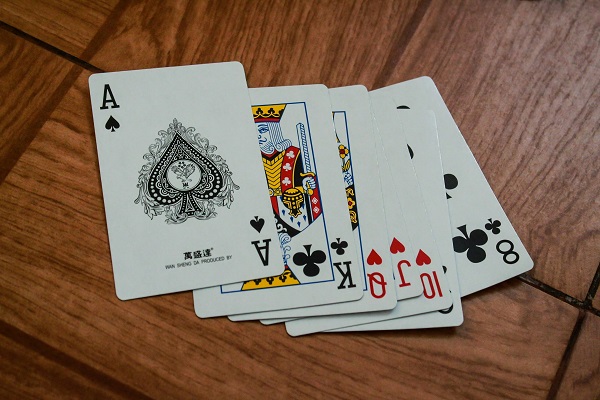Also Interesting
Training Without Burnout: Smart Exercise Planning for Older Adults

Smart Strategies to Avoid Overtraining Syndrome for people over 50
Exercise brings many benefits, even later in life. It improves sleep and keeps the heart strong. Too much training can cause fatigue or slow recovery. That is when overtraining becomes a risk.
Older adults need movement but also time to recover. Each session should match the body’s limits. Rest matters as much as the workout itself. Some training groups now work with digital wellness tools to track recovery and routine. Many use platforms like partners.1xbet.ie, which support structured plans and regular activity checks.
By using clear steps older adults can keep moving without exhaustion. The goal is steady work that supports muscles and nervous system without pushing too hard.
Recognising Early Signs of Overtraining
The body gives warnings when training goes too far. These may include sleep changes, long soreness, headaches, or mood swings. Ignoring these signals often makes things worse. Recovery takes longer, and injuries may follow.
Older people are more sensitive to load and rest. Sessions must be shorter and spaced out more. Muscles need extra time to repair, and joints need support. A session that feels fine one day can cause stiffness the next if not planned well.
Common signs of overtraining include:
● Poor sleep quality, despite tiredness
● Mood changes or lack of motivation
● Joint pain that doesn’t fade
● Slow heart rate in the morning or high pulse during rest
● No progress, even with consistent effort
If any of these appear, training should pause or change. Rest is not failure. It is part of progress.
Building the Right Weekly Routine
Safe training for older adults must be planned. It needs strength, movement, and enough recovery. A good mix supports function and avoids overload. Two or three sessions per week is often enough.
Each week may include:
● One strength session with light weights or resistance bands
● One day of low-impact cardio like walking or swimming
● One mobility or balance-focused session using slow, controlled movement
● Two full rest days with light walking or stretching only
Workouts should be short. Thirty minutes is often ideal. Exercises must be simple. Avoid sudden lifts. Focus on form, breath, and steady pace.
Rest days help more than many think. They allow joints to calm and muscles to rebuild. Some people feel guilty about rest. However, for older bodies, it is where the change happens.
Food and hydration also support recovery. Enough water, light protein, and fruit after sessions keep the system strong. Missing meals or skipping rest may lead to weakness or slow healing.
Using Tools to Support Balance
Older adults benefit from tracking habits. This helps spot patterns. If tiredness grows or pain lasts, a log shows where the change began.
Some tools send reminders for rest or check if movement is balanced. That lowers the risk of repeating mistakes. Even a paper log or daily note can help.
Medical checks still matter. Any new plan should match the user’s condition. A talk with a health professional helps set safe limits. Adjustments may be needed for joint issues, past injury, or sleep problems.
Many older adults also benefit from group classes. These offer structure and social support. When supervised, they also reduce risk. A trainer sees mistakes before they cause harm.
Staying Consistent Without Strain
The best results come from habits, not from speed. A small workout each week builds more strength than one big effort followed by rest. Older adults improve by doing less, more often.
Routines must match energy. Morning training works better for some. Others prefer evening walks.
Picking the right time helps with rest and sleep. It also prevents skipped sessions.
Training can feel simple. That does not mean it is not working. The goal is to stay active without pain, support mental clarity, and avoid health drops.
By adjusting effort, tracking progress, and allowing space to rest, older adults can keep moving without fear of overload. Exercise supports life, but only when the balance is right.
Also Interesting
The US Mens National Team’s Gold Cup 2025 journey: Group stage performance, key players, and more

The US Men’s National Team (USMNT) has entered the 2025 CONCACAF Gold Cup campaign hoping to recreate their 2021 victory. The team has delivered enough to take them into the knockouts, showcasing good player quality and strong cohesion. Let’s take a look at their performance this far, who has shone, and who’ll be fun to watch even after the tournament is over.
Group stage performance
The USMNT were paired alongside Trinidad & Tobago, Saudi Arabia, and Haiti in Group D and managed to secure the top spot. The team won a resounding victory after putting five to nil against Trinidad & Tobago in their first matchup of the tournament.
Pochettino’s men’s second match was against Saudi Arabia four days later, a much tougher test for the Americans. They hardly created chances against the Saudis, who ranked No. 58 on the latest FIFA rankings. Thanks to defender Chris Richards’ brilliance, they scored a goal from a set piece, ending the match 1-0. The win saw the USMNT book their place in the quarterfinals. Their 2-1 win over Haiti on matchday 3 cemented their position.
You can bet on upcoming CONCACAF Gold Cup fixtures for the team. SportyTrader offers the best picks and predictions for anyone looking for expert forecasts.
Key players driving the campaign
Chris Richards, a Crystal Palace defender in the EPL, has secured his place as a key man in the USMNT squad in the Gold Cup campaign. Fresh from clinching the FA Cup title against Manchester City, the 25-year-old was the “man of the match” against Saudi Arabia, courtesy of his lone and decisive goal. Richard’s team spirit and composure at the top center-back position in the squad have brought a boost to the USMNT, a position where they lacked depth.
Another key man is Matt Turner, a veteran goalkeeper with international experience. Turner didn’t have much play time at the club level this past season, and Pochettino hasn’t prioritized him in the tournament either. However, his presence is still reassuring.
37-year-old Tim Ream and Miles Robinson had all eyes on them during the 2021 Gold Cup and are working towards repeating the same superb display. After recovering from a foot injury, Tyler Adams is fully fit and participating. He, alongside Johnny Cardoso, adds dynamism and versatility to the team.
Emerging prospects to watch
Five players have been given their professional call-up under Mauricio Pochettino. This includes Orlando City right-back 20-year-old Alex Freeman, whose group stage performances have shown that he’s more than just a breakout star. Sebastian Berhalter’s fine assist for Richard’s goal against Saudi Arabia also shows the new participants have much to offer.
Besides the fresh faces, other young players are making their mark, most notably Malik Tillman, who scored three goals over the group stage matches. Forward Patrick Agyemang, who scored the winner in the Haiti match, is also attracting interest.
USMNT’s legacy in the tournament
Team USA is the second most successful in Gold Cup history. Since the competition was established in 1991, the US has won it seven times, the latest win coming in 2021. They’re only behind Mexico, who have a record nine wins.
In the previous 17 editions of the tournament, they’ve reached the finals 12 times. Their dominance is underscored by a strong defensive structure and the ability to deliver when it matters most. Over the years, the Gold Cup has launched several top players into stardom, from Landon Donovan to Clint Dempsey, Christian Pulisic, and Tyler Adams. This year’s tournament is poised to do the same.
From the Gold Cup to the World Cup
Beyond just competing for the CONCACAF Gold Cup, the USMNT’s journey so far has revealed their preparation level for the FIFA World Cup in 2026. The team had a poor outing at the 2024 Copa América and Concacaf Nations League. Fortunately, the intervention of the new head
coach, Mauricio Pochettino, has restored hope for the upcoming 2026 FIFA World Cup.
With Chris Richards’ leadership as the team captain and collaboration with other youngsters, Mauricio Pochettino’s World Cup dream may begin to take shape. Of course, for the players as well, the Gold Cup is a medium for them to ultimately make their case for the World Cup roster.
The US team has consistently proven to be a dominant force at the CONCACAF Gold Cup. This year’s roster, which combines veterans and young talent, has made a solid showing so far. Ultimately, for the US team, the tournament isn’t just about lifting trophies. It’s a proving ground for building chemistry, testing tactical setups, and identifying leaders and rising stars ahead of global competitions like the World Cup.
Also Interesting
From Coast to Coast: Inside Canada’s Gambling Culture

Just recently, Statista released a report claiming that the Canadian casino market could hit US$9.57 billion by the end of 2025. If things go well for this sector, it could continue growing by a CAGR of 2.95%, translating to a market size of about US$17.51 billion by 2029. This is just to show you how gambling has become ingrained in this country’s culture.
And while gambling might not be the first thing that comes to mind when you think of Canada, this country’s residents have been engaging in games of chance since time immemorial. Looking at the statistics, studies show that close to six in ten Canadians participate in some kind of gambling.
And in this digital age, accessing gambling experiences has never been as convenient. Can you imagine that, by simply clicking a few buttons on their phones, players can access the best online gambling sites from anywhere at any time? Considering all these factors, you definitely want to stay around and explore this colourful world.
Where It All Began
As already mentioned, gambling is not a thing of yesterday in Canada. Indigenous people would engage in the Slahal game using the foreleg bone of a deer or similar animal. There were two sets of bones: one striped and another unstripped.
The game involved players singing songs while hiding the striped and unstriped bones in their hands. An opposing team would try to guess the hand holding the unstripped bone, and if they guessed right, they took the bones. If their guess was wrong, they handed over one of their sticks, which they used for scoring. This game would continue until one of the teams had all the scoring sticks.
After several years, colonists’ gambling games, such as dice games, came to the scene. This was followed by changes in regulations, which dramatically impacted the country’s gambling culture. A good example is when the government enacted the Canadian Criminal Code in 1892 to prohibit gambling games. However, the following years saw some games like raffles excluded. In 1920, racetrack betting using the pari-mutuel system was reintroduced, and certain games of chance were permitted at agricultural fairs and exhibitions.
Other major shake-ups came in 1938, when Canada allowed games of chance at bona fide social clubs. About 16 years later, the three-card monte, which was becoming exceedingly popular, was added to the list of prohibited games. Then came the late 1960s when the government delegated the responsibility of running lotteries to individual federal and provincial governments. These changes did not stop here, as more amendments were made over the following years, causing Canada’s gambling ecosystem to be what it is today.
Popular Physical Destinations
After the first land-based casino launched in 1989 in Winnipeg, many others would follow. Now, if you want to immerse yourself in some table games, there are over 115 options at Casino de Montreal. You’ll also find more than 3,000 slot game variations, video poker and electronic gaming machines like the electronic Texas Hold’em poker table to keep you engaged. Surprisingly, Casino de Montreal welcomes over seven million visitors annually, highlighting its undisputed reputation in Canada’s culture.
Over on the west coast is the Parq Casino, a 72000 square-foot casino spread across two floors. You may also want to take advantage of this destination’s eight award-winning restaurants and a rooftop park. If you want an exclusive experience, luxury hotels at this location will offer just that.
Then there’s Casino Nova Scotia in Halifax, where the vibe shifts again. Besides the various casino game variations, the venue embraces a maritime spirit with seafood-focused menus, music concerts and a more relaxed, welcoming atmosphere. If you intend to combine your casino gaming with some electrifying live performances at this venue, you do not want to miss the ‘Queen: It’s a Kinda Magic’ concert, which will be held on August 31, 2025.
The Age of the Internet
Like other nations, the Canadian gambling culture has not escaped the online platforms’ wave. As a result, players can now access entertainment regardless of their location – whether in Kugluktuk, Ketchikan or Nova Scotia. All they need is proper internet connectivity and a smartphone to get started.
This convenience is part of why bridgerliner.com expects the online casino market revenue to hit $3.7 billion by the end of this year (2025), a compound yearly growth rate of more than 6% since 2020. The exciting part is how these gambling providers work hard to ensure the online experiences are as realistic as possible. That’s why you may have seen most of them integrating live casino games into their product portfolios.
Besides live games, operators have also been taking advantage of technologies like artificial intelligence to improve customer experience. By using AI, an operator can monitor your online activity and extract meaningful information about your preferences that can help provide more relevant experiences. This helps to keep players more connected, as it presents the operator as caring and customer-focused. According to WiserNotify, customizing encounters like this can actually increase retention capacity by as much as 44%.
Seeing a bigger percentage of Canadians gambling shouldn’t be surprising. From the ancient days of Slahal to the contemporary age of the internet, games of chance have been adjusting and have become more accessible, allowing more Canadians to participate. Physical destinations also offer beyond-gambling experiences that keep locals and visitors returning for more, further explaining why this practice is deep-rooted in the country’s culture.
-

 COVID-191 day ago
COVID-191 day agoOntario man launches new challenge against province’s latest attempt to ban free expression on roadside billboards
-

 conflict2 days ago
conflict2 days agoFordow obliterated: Israeli report confirms nuclear site inoperable
-

 Business2 days ago
Business2 days agoFederal government should finally cut Trudeau-era red tape
-

 Alberta1 day ago
Alberta1 day agoAlberta Next Takes A Look At Alberta Provincial Police Force
-

 COVID-191 day ago
COVID-191 day agoNew Peer-Reviewed Study Affirms COVID Vaccines Reduce Fertility
-

 Alberta1 day ago
Alberta1 day agoCanadian Oil Sands Production Expected to Reach All-time Highs this Year Despite Lower Oil Prices
-

 Energy1 day ago
Energy1 day agoThis Canada Day, Celebrate Energy Renewal
-

 International2 days ago
International2 days agoPresident Xi Skips Key Summit, Adding Fuel to Ebbing Power Theories






